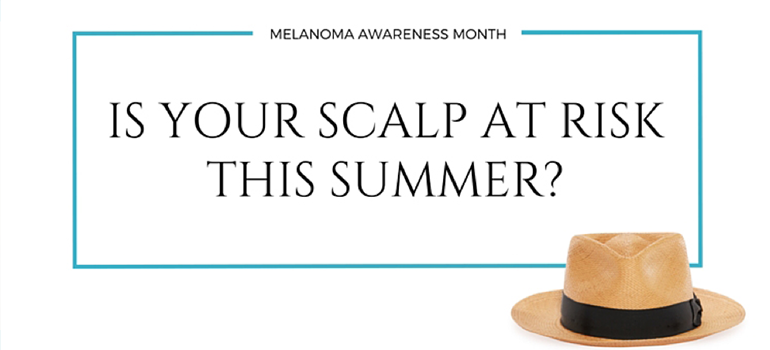May is Melanoma Awareness Month
Melanoma Monday, the first Monday in May, was established to raise awareness and remind us to familiarize ourselves with some of the general information about skin cancer.
Melanoma skin cancer is included in the most common types of cancer in the United States, and while millions of non-melanoma skin cancer cases are treated in the United States, melanoma is the deadliest and most aggressive form of the skin cancer disease. It is said that one person dies of melanoma every hour and will cause an estimated 76,380 new cases and 10,130 estimated deaths in 2016.
The scary part? Under all our many hairstyles, there might be a cancerous spot or tumor lurking unnoticed, because, hey, who can see the top of their own head? Skin cancers of the scalp are too easy to over-look, delaying detection which could be one reason why melanomas of the scalp and neck make up 6% of all melanomas. It is said that people with this type die nearly twice the rate of people with melanomas elsewhere on the body. Along with breast cancer, melanoma is the most common type among 25 – 29 year olds and is on the rise in Baby Boomers due to lack of modern sunscreens in childhood.
Countless scalp and neck melanoma survivors credit their stylist for saving their life by pointing out new/abnormal spots. Considering most people see their hair stylist or barber more regularly than their dermatologist and typically see the same person, this makes them more familiar with any scalp changes. Also, don’t forget to be scheduling a professional cancer check with a professional at least once a year.
You can also check yourself, or have a friend help you, by using a mirror and hairdryer on low to move the hair around to see the scalp. Keep in mind that melanomas might not look like a mole at all. They can also look like a bruise that doesn’t heal, or a dark streak under a fingernail or toenail. Did you know that Bob Marley was diagnosed with melanoma under one of his toenails and by disregarding advice to amputate, he passed away years later from it?
Let’s review the classic ABCDE warning signs for detection:

- A – Asymmetry: melanomas are often asymmetrical in shape, or irregular, while benign moles are usually symmetrical.
- B – Border: unlike regular (non-cancerous) moles, melanomas usually have an irregular border, or edge, that is difficult to define.
- C – Color: melanomas tend to be more colorful (blue, black, brown, tan, red) than regular moles, which are usually a single shade of brown or tan. Uneven distribution of different colors occurring in the same mole is also of concern.
- D – Diameter: melanomas tend to be larger than normal moles (but certainly not always) and any mole that has a larger diameter than a pencil eraser should be professionally looked at.
- E – Evolving: one of the most important factors is the evolution of your mole(s). Knowing what’s normal for your body will make you aware if a mole has gone through a recent change, such as changing size, color, shape or texture for example.
- E – Elevation: some people also say ‘E’ stands for Elevation. Instead of being flat, a mole may be elevated off the skin, or different parts of the mole may have different elevations.
With summer coming up, the increase of sun exposure on your hair and scalp not only raises potential skin cancer risks, but the sun’s rays can also damage your hair follicles.











